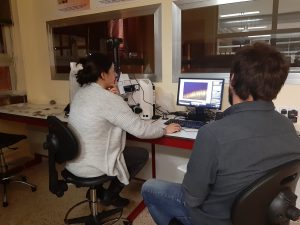Between October 22 and 25 our colleague David Cuenca Solana traveled to the Autonomous University of Madrid, to develop, together with Laura Manca (National Museum of Natural History of Paris) and Francesca Romagnoli (Autonomous University of Madrid) various activities related to the execution of the ArchaeoENHANCE project (Archeomalacology research: Effects of Natural and Human Agents in Contexts). The project aims to conduct a 4-year experimental protocol with the objective of determining and documenting the impact of different taphonomic processes on archaeological shells, especially those that have been used as tools by human groups during Prehistory. The project is funded by the international research network IRN-TAPHEN.




